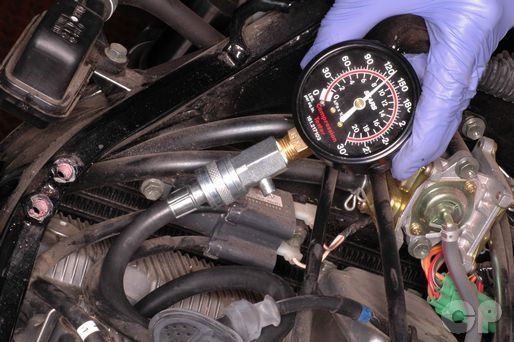Compression Test
SAFETY FIRST: Protective gloves and eyewear are recommended at this point.
Prior to testing the compression make sure the valve clearance is in specification and the cylinder head nuts are properly torqued. See the Valve Clearance and Cylinder Head topic for more information. Also, the battery should have a full charge. See the Charging System topic for more information on the battery.
Start the engine and allow it time to warm up.
Remove the fuel tank. See the Fuel Tank topic for more information.
Remove the four spark plugs. See the Spark Plugs topic for more information.
Thread a compression tester into the spark plug hole.
Special Tools-
Compression Gauge Set: 09915-64510
Adaptor: 09913-10750

Hold the throttle wide open. Crank the engine with the starter motor until the needle on the gauge stops rising. The engine should reach the specified compression in just a few seconds.
(Cylinder Compression: 1,000 - 1,500 kPa or 142 - 213 psi )
(Cylinder Compression Service Limit: 800 kPa or 114 psi )
Repeat the compression test for all four cylinders.
(Cylinder Compression Difference Limit: 200 kPa or 28 psi)
Low compression is an indication of excessive engine wear, possibly worn rings or poorly sealing valves, or maybe a tight valve with not enough valve clearance. High compression is possibly an indication of excessive carbon build up on the pistons or performance modifications.
The engine should be serviced if the difference in compression between the cylinders exceeds the service limit. Also, service the engine if the compression of all cylinders is below 1,000 kPa or 142 psi.
Copyright - Cyclepedia Press LLC

Note: If you are viewing this document offline be sure to visit the latest version online at http://www.cyclepedia.com before attempting any repairs. Updates are made without notice.